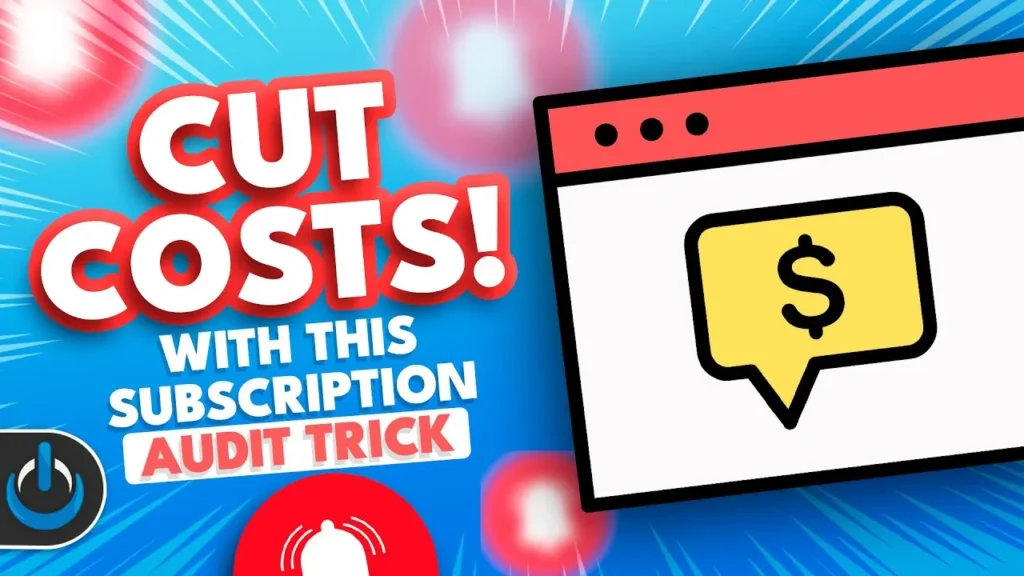With the rise of subscription-based services, it’s easy to lose track of how many services we’re paying for each month. Subscription audits can reveal hidden savings and help you cut back on unnecessary expenses. In this guide, we’ll walk you through five practical steps to conduct an effective subscription audit and take control of your budget.
Why a Subscription Audit is Essential for Saving Money
Subscription services offer convenience, but when left unchecked, they can accumulate into a significant monthly expense. Regular subscription audits allow you to see where your money is going, helping you identify and eliminate services you no longer need. By scheduling a subscription audit at least every six months, you can regain control over your finances and ensure you’re only paying for what adds real value to your life.
Step 1: Gather a List of All Your Subscriptions
The first step in any successful subscription audit is to identify all the subscriptions you’re currently paying for. Here’s how to get a comprehensive list:
- Review Bank and Credit Card Statements: Check statements for any recurring charges and list them out.
- Use Subscription Management Apps: Apps like Truebill or Trim can help identify all subscriptions linked to your accounts.
- Check App Store Subscriptions: If you use app subscriptions through Google Play or the Apple App Store, check there for any overlooked charges.
Once you have a complete list, you’re ready to start your subscription audit and uncover potential savings.
Step 2: Categorize and Assess Each Subscription
With your list in hand, categorize each service by its purpose, such as entertainment, productivity, or health. During your subscription audit, ask yourself:
- Is this service essential? Consider if the subscription is something you use regularly.
- Are there free alternatives? Some paid services have free or low-cost alternatives that might serve your needs just as well.
- Is it worth the cost? Evaluate if the value you’re getting justifies the expense.
Categorizing each service during your subscription audit helps you see where your money is going and highlights potential areas for savings.
Step 3: Identify Overlapping or Unused Subscriptions
One of the main goals of a subscription audit is to find redundant or rarely used services. Many people unknowingly pay for overlapping services, like multiple streaming platforms, or fitness apps that go unused. During this step of the subscription audit, look for subscriptions that:
- Serve the same purpose: If you’re subscribed to multiple streaming platforms, consider reducing to one or two.
- Go unused: If you haven’t used a service in the past month or two, it might be time to cancel it.
Identifying overlap is a key part of the subscription audit process and can lead to substantial savings.
Step 4: Calculate Monthly and Annual Costs
Once you’ve narrowed down your list, calculate the monthly and annual costs of each remaining subscription. This gives you a clear picture of the total financial impact. During this part of your subscription audit, create a simple spreadsheet to track:
- Monthly Cost
- Annual Cost
- Total Cost for All Subscriptions
Seeing these totals can be eye-opening and often reveals how much you could save by reducing your subscriptions. A thorough subscription audit can lead to meaningful changes in your spending habits.
Step 5: Cancel Unnecessary Subscriptions and Monitor Your Spending
The final step of your subscription audit is to cancel subscriptions that no longer serve you. Follow these best practices:
- Keep Track of Renewal Dates: Some services renew automatically, so be proactive in canceling any that you don’t want before the renewal date.
- Confirm Cancellation Emails: Always confirm that you’ve successfully canceled a service.
- Schedule Regular Audits: Make it a habit to conduct a subscription audit every six months. This helps you stay on top of new subscriptions and avoid unnecessary costs.
Regular subscription audits can save you hundreds of dollars each year and ensure that your spending aligns with your priorities.
Conclusion
Conducting a subscription audit may seem tedious, but the savings can be well worth the effort. By following these five steps—gathering a list of subscriptions, assessing each one, identifying overlaps, calculating total costs, and canceling unnecessary services—you’ll be well on your way to uncovering hidden savings and maintaining financial control. Start your subscription audit today to take charge of your finances and make sure every dollar you spend aligns with your goals.

